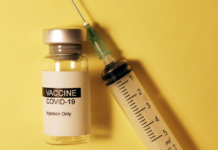The Canadian Museum for Human Rights (CMHR) was hit with a fact check on Twitter over a claim that “215 children were discovered in unmarked graves” at the former Kamloops Indian Residential School in 2021.
The federal museum made the claim on May 27, which is based on reporting by the Canadian legacy media on soil disturbances detected using radar technology that has been recognized internationally as being sensationalized and inaccurate.
“It has been two years since the remains of 215 children were discovered in unmarked graves at the Kamloops Indian Residential School,” claimed the CMHR.
“Since then, more unmarked grave sites have been uncovered and there are still thousands of children who never came home from residential schools and whose graves have never been found.”
It has been two years since the remains of 215 children were discovered in unmarked graves at the Kamloops Indian Residential School. pic.twitter.com/U8SgwGnEGN
— Canadian Museum for Human Rights (@CMHR_News) May 27, 2023
A subsequent “community notes” tag added by Twitter debunked the extraordinary claims made by the CMHR.
“No human remains have so far been found at the KIRS site, but 215 soil disturbances were found,” wrote the community note.
“The RCMP has not been allowed to investigate, and Dr. Beaulieu stated that ground penetrating radar is not capable of determining if a disturbance is human remains.”
As reported exclusively by True North, two years later, the claim made by the CMHR has no evidence to back it up.
“We’re in the same place as we were two years ago,” former Mount Royal University professor Dr. Frances Widdowson told True North.
“But there is a bit of correction that’s happening in the media… the word ‘suspected’ is being put in front of ‘graves.’ Media and politicians are recognizing that we don’t have actual evidence of burials.”
Recently, a panel convened by the federal government assigned to oversee the search for missing children and bodies at the sites of former residential schools turned down an offer of assistance from an international missing persons organization.
The Hague’s International Commission on Missing Persons reached out to the National Advisory Committee on Residential Schools Missing Children and Unmarked Burials but was turned down because they were “non-Indigenous.”
“While the (committee) is appreciative of a number of changes that have since been made to this agreement, we remain deeply concerned that such an important and sensitive process has been entrusted to a non-Indigenous organization with no prior history of working with residential school survivors,” claimed the committee.






















